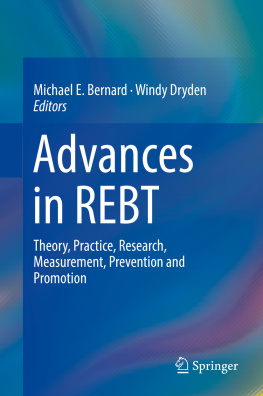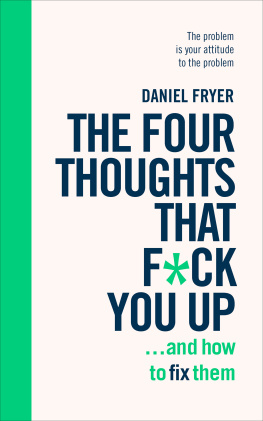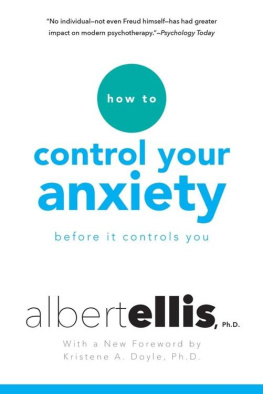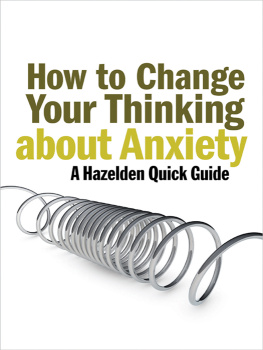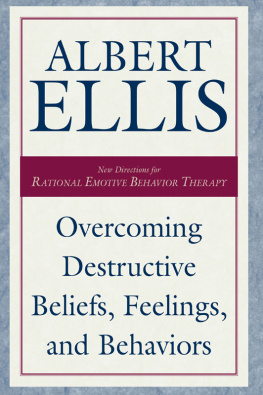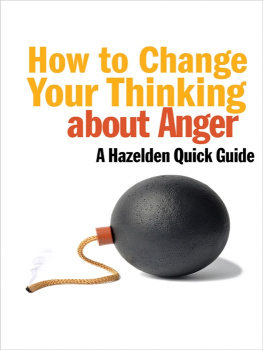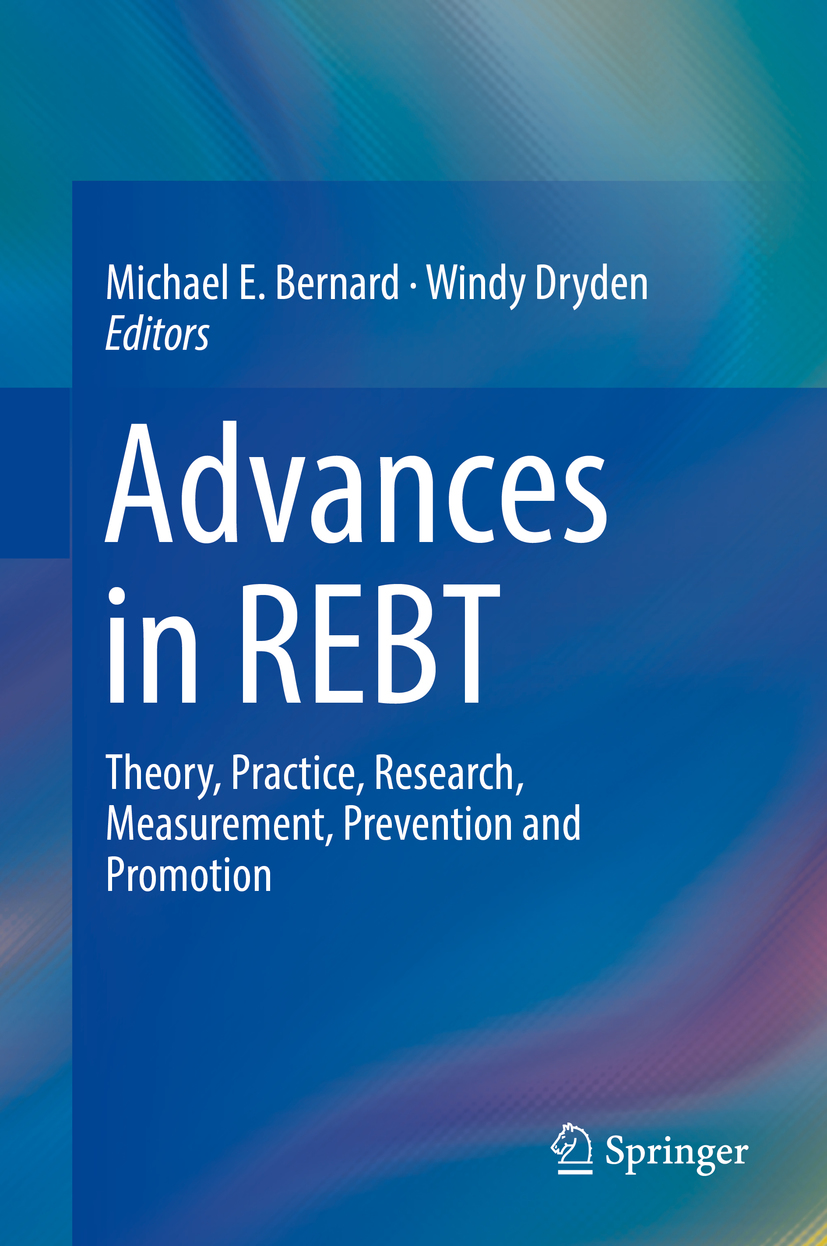Editors
Michael E. Bernard
Melbourne Graduate School of Education, University of Melbourne, Melbourne, VIC, Australia
Windy Dryden
Goldsmiths University of London, London, UK
ISBN 978-3-319-93117-3 e-ISBN 978-3-319-93118-0
https://doi.org/10.1007/978-3-319-93118-0
Library of Congress Control Number: 2019933301
Springer Nature Switzerland AG 2019
This work is subject to copyright. All rights are reserved by the Publisher, whether the whole or part of the material is concerned, specifically the rights of translation, reprinting, reuse of illustrations, recitation, broadcasting, reproduction on microfilms or in any other physical way, and transmission or information storage and retrieval, electronic adaptation, computer software, or by similar or dissimilar methodology now known or hereafter developed.
The use of general descriptive names, registered names, trademarks, service marks, etc. in this publication does not imply, even in the absence of a specific statement, that such names are exempt from the relevant protective laws and regulations and therefore free for general use.
The publisher, the authors, and the editors are safe to assume that the advice and information in this book are believed to be true and accurate at the date of publication. Neither the publisher nor the authors or the editors give a warranty, express or implied, with respect to the material contained herein or for any errors or omissions that may have been made. The publisher remains neutral with regard to jurisdictional claims in published maps and institutional affiliations.
This Springer imprint is published by the registered company Springer Nature Switzerland AG
The registered company address is: Gewerbestrasse 11, 6330 Cham, Switzerland
Preface
At the 2nd International Congress on Cognitive Behavioral Coaching held in Athens in June, 2016, Windy and I agreed that it was timely for current REBT theory, practice, research, measurement, and applications to be written about by leading REBT scholar-practitioners throughout the world. Sharon Panulla, Executive Editor at Springer whom we have worked with over two decades, agreed to support the project. In discussing the range of global REBT professional activity, we arrived at 36 topics for chapters, and the project with Sharons support became two books.
Windy and I first met in 1980 while attending the REBT Supervisors Practicum at the Institute for Rational Emotive Therapy in New York that was conducted by Richard Wessler. 1980 was an important year for REBT as four books were published on the theory and practice of REBT by authors other than Ellis (Wessler/Wessler, Bard/Fisher, Grieger/Boyd, Hauck). It was an exciting time for both of us as we had the opportunity to work directly with Albert Ellis, sat in on his group therapy sessions, and became close to an amazing array of REBTers including but not limited to Ray DiGiuseppe, Janet Wolfe, Dom Dimattia, and Ann Vernon. Subsequently, we became serial editors of the Journal of Rational-Emotive & Cognitive-Behavior Therapy.
Albert Ellis was a genius (we know he scored in the top 99% of the Army Alpha IQ test). As a result of his superior aptitude, his extensive reading of philosophy and psychology, and his 150,000+ hours of clinical practice, he discovered something about the human psyche that is quite unique. This discovery and its derivative clinical, counselling, educational, and coaching practices continue to stand the test of time and form a major part of his legacy. Ellis discovered rationality as a mental strength that helps people overcome adversity and self-manage negative emotions and self-defeating behaviors and as a self-actualizing force that assists people to live fulfilled, goal-achieving lives. Of course, Ellis also shed light on an oppositional force within the human psyche, irrationality , that, as he so eloquently discussed and wrote about, is more important as a contributor to peoples mental health problems than their surrounding environment or their early childhood experiences.
Ellis expressed his view that the goal of REBT, when practiced in its most elegant and powerful form, is to educate people to become more rational in order to achieve their goals (and dreams) largely through changes in their philosophy of life. Ellis considered that all people construct personal beliefs that together form a belief system that ideally helps them to achieve their goals of living a long, self-actualized, and happy life and which leads to achievement, love, and an absence of stress. Unfortunately, because of peoples largely biological propensity, rational beliefs (I very much want to be successful, loved and stress free) are made into rigid, irrational shoulds, oughts, musts, and needs (I need to be successful, loved and comfortable). This is how peoples belief system can prevent them from achieving their goals, leading to emotional misery. Much of REBT is devoted to helping strengthen peoples rational beliefs. At the same time, and deriving from his self-confessed gene for efficiency , Ellis and REBT methods help people through the use of his renowned ABC model to become great problem-solvers in the emotional domain further developing their mental faculty of rationality.
We think the chapters in this book on REBT measurement and REBT empirical status by Professor Daniel David, Department of Clinical Psychology and Psychotherapy/International Institute for Psychotherapy, Babe-Bolyai University of Cluj-Napoca, and his colleagues deserve special mention. In the early days, REBT was unfavorably compared with Becks cognitive therapy because the scientific rigor and evaluation studies were not up to the best standards. Through Professor Davids research, meta-analyses of REBT research, and thoughtful discussion of how current REBT assessment surveys exemplify best measurement practice, REBT can now be viewed better through the lens of science and research.
Thirty-eight years later, Windy and I are as excited about REBTs contribution to our own work and the mental health and well-being of everyone as we were in the 1980s. And this view is shared by the contributors to these two books and the many, many mental health practitioners using REBT today. The contributors know and practice REBT very well. They share Ellis views on the empowering aspects of rationality and how REBT methods achieve this end. We have no doubt that you will share in the excitement we have about how REBT continues to make a difference to the lives of many.
Michael E. Bernard
Windy Dryden

